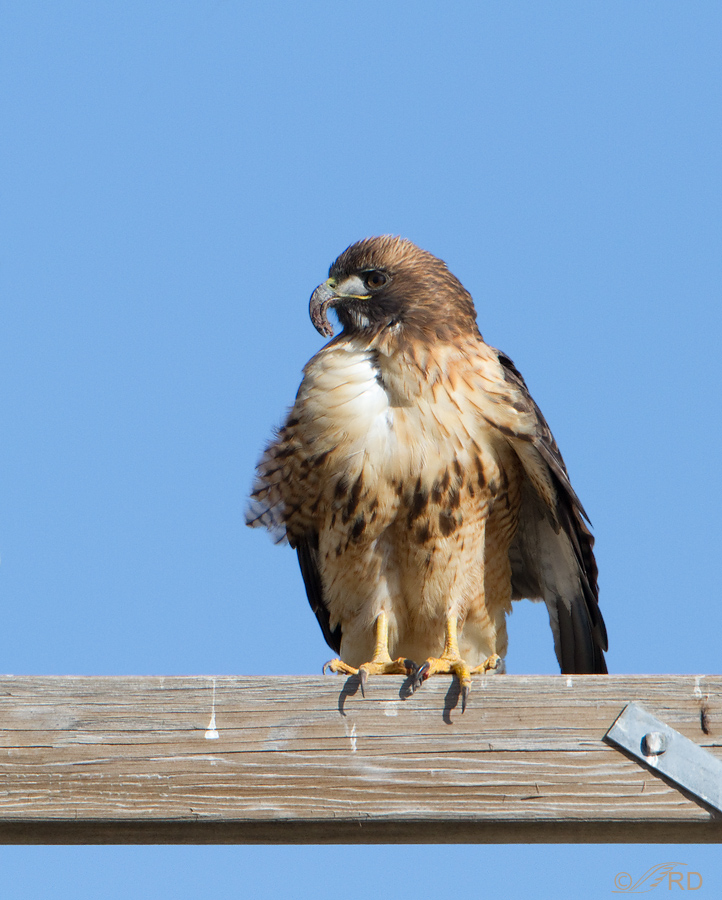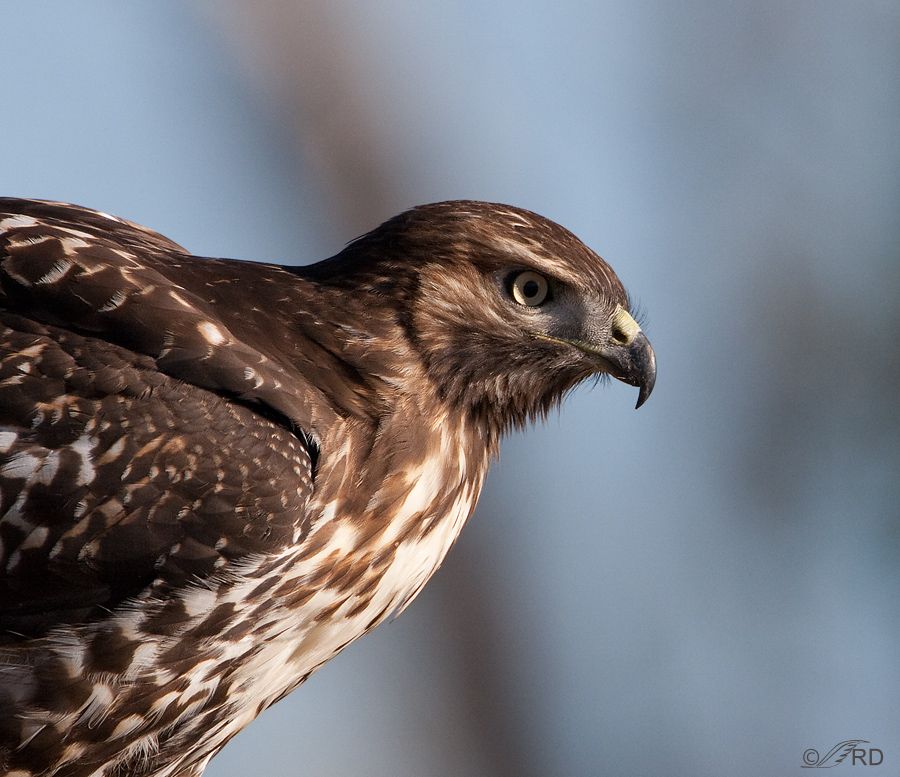This morning I found this Red-tailed Hawk on a telephone pole near Grantsville, Utah. As soon as I looked at it through my lens I knew that something was wrong with the birds beak.
A bit of research almost immediately turned up the probable culprit – Long-billed Hawk Syndrome. Birds with this condition have atypical uncontrolled growth of either or both upper and lower bills. Birds affected often have secondary infections in their bills. Since their bills are used for activities such as eating, preening, killing prey and feeding offspring the syndrome is extremely serious. Most birds with this condition die of starvation.
The syndrome gets its name because most affected birds have been Red-tailed Hawks, though other species of raptors get the condition also, including Peregrine Falcons and Rough-legged Hawks. The first case of LBH Syndrome was reported in Washington state in 1997 and reports have been increasing since.
This is what a normal Red-tailed Hawk’s bill looks like – quite a dramatic and obvious contrast to the diseased one.
The cause of this condition is unknown, though research is ongoing.
A sad situation for this poor bird.
More info here.
Ron
Addendum: I posted one of these photos on a nature phography forum and a veterinarian with many years of experience with falconry birds has stated unequivocally that this hawks condition occurred because it was “kept jessed and tethered by someone who was totally ignorant of the necessity to keep the upper and lower bill trimmed to normal shape”. Whatever the true cause of the deformity, it’s possible that an attempt will be made (by a qualified person) to trap this hawk so that its bill can be trimmed so it might have a chance at survival. If that occurrs, I’ll report back here.
Addendum #2: Folks with the Falcon Research Group and HawkWatch International have determined that this bird does indeed have long-billed syndrome (sickle bill) and it cannot be saved because the condition destroys the bone that supports the lower mandible. Coping the bill would do no good and only severely stress the hawk. Nature will be allowed to take its course. A sad end…





Ron,
I am a wildlife rehabilitator in eastern Utah. I do believe you are looking at long-billed hawk syndrome as well. The rate of growth varies, so this bird may be helped if you can find an ‘ethical’ falconer to trap the bird and if they are familiar with this, they can cope the beak, if not, then they should get it to a rehabilitator who is familiar with it ASAP and then we can do that. The bird will need to be returned to your area. I can clearly see the line where the beak should actually begin in the photo.
I just read the addendum posted and I disagree that nothing can or should be done at this point.
Without an exam, we don’t know how much damage has been done at this point. IF, there is too much, then the bird should be euthanized but without a proper exam, all of this is is based on guessing.
Let me know if I can help.
Debbie
I had no idea. Once more you amaze, educate and illustrate. Thank you.
Heartbreaking. Our Sulphur-Crested Cockatoos can suffer from a similiar syndrome known as Beak and Feather Disease. Their beaks (mostly the top bill) grow abnormally long and they lose their feathers. Like your hawks they die of starvation. A slow and unpleasant death. Cause not known, but it does appear to be contagious. No treatment currently available. Last year we took a cockatoo suffering from this truly unpleasant disorder to our local RSPCA (Royal Society for the Prevention of Cruelty to Animals) to have it euthenased. I cried all the way there and back.
Ron:
Informative post and excellent photos. I was not aware of the LBH Syndrome. I’ve never seen obvious abnormalities in the hawks in our area. However, I have photos of a Sora with an abnormal alignment of the upper and lower bills. I also have a photo of a yellow-headed blackbird (rare in our area) with a beak abnormality.